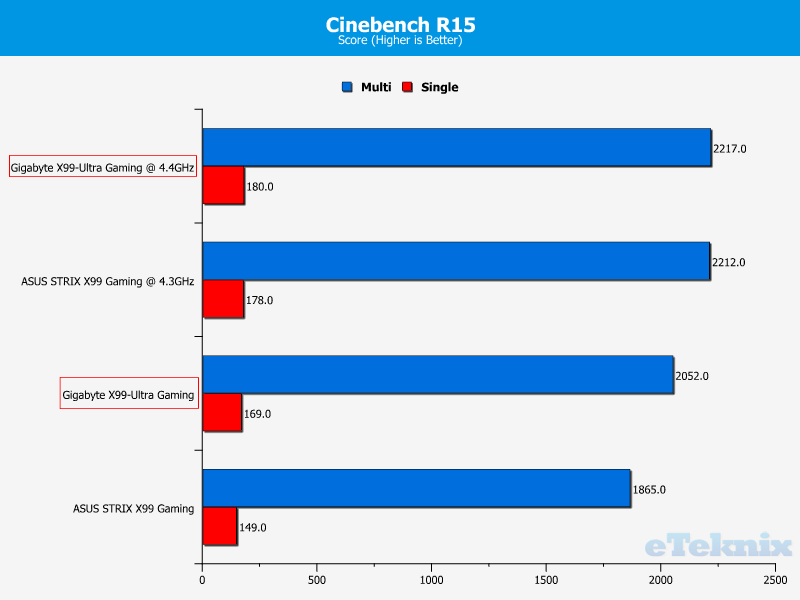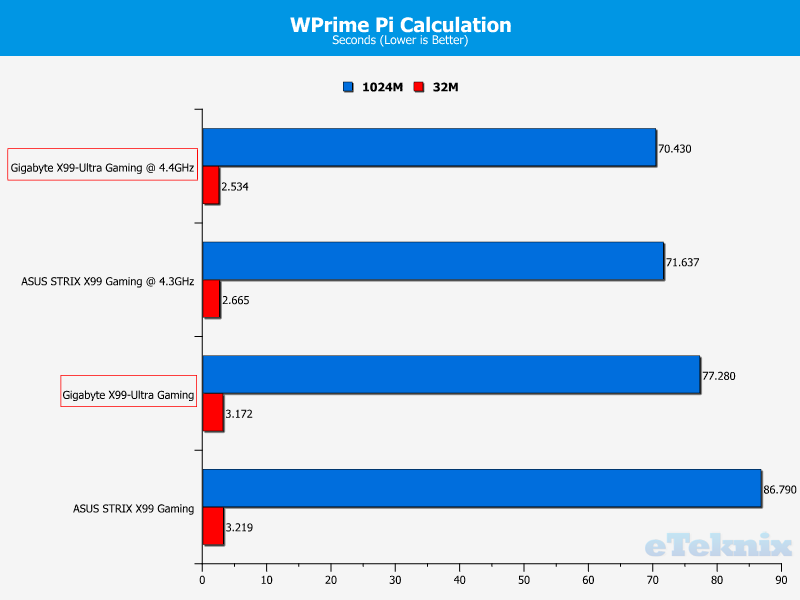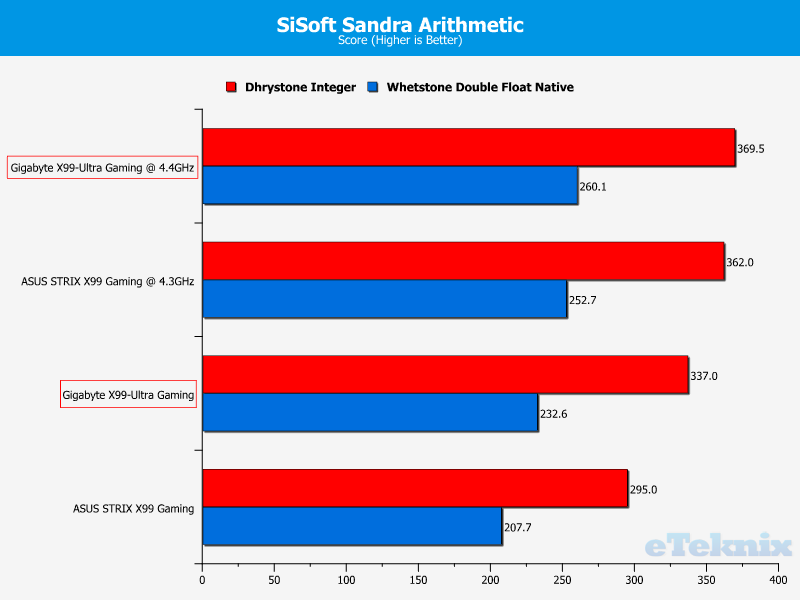Gigabyte X99-Ultra Gaming LGA2011-3 Motherboard Review
John Williamson / 8 years ago
CPU Performance
Cinebench
The motherboard’s substantial lead over the ASUS STRIX X99 Gaming at stock value stems from the contrasting default frequencies. Interestingly, Gigabyte automatically configures the i7-6950X to 4.0GHz on all cores while ASUS targets a more conservative 3.4GHz frequency. This caused me to question whether to manually input a 34 multiplier or stick with Gigabyte’s automatic setup since that’s what most people will be using. In the end, it seemed the better choice to opt for the 4.0GHz default as I’m expecting mother manufacturers to apply a similar strategy.
According to my testing, the 4.0GHz frequency pays dividends and allows the 10-core behemoth to surpass 2000. Once overclocked, the multi-score increases substantially and it seems the 100MHz difference is enough to secure the top spot.

WPrime
On a similar note, the motherboard’s aggressive settings help it to easily pull ahead and complete the calculation benchmarks in an absurdly quick time. Once overclocked, the time taken reduces considerably although there’s very little to choose between the overclocked data.

SiSoft Sandra
During the SiSoft Sandra Arithmetic benchmark, the motherboard fared rather well and posted exceptional numbers. The performance is even more impressive after configuring the 4.4GHz overclock and takes full advantage of the CPU’s capabilities.




















